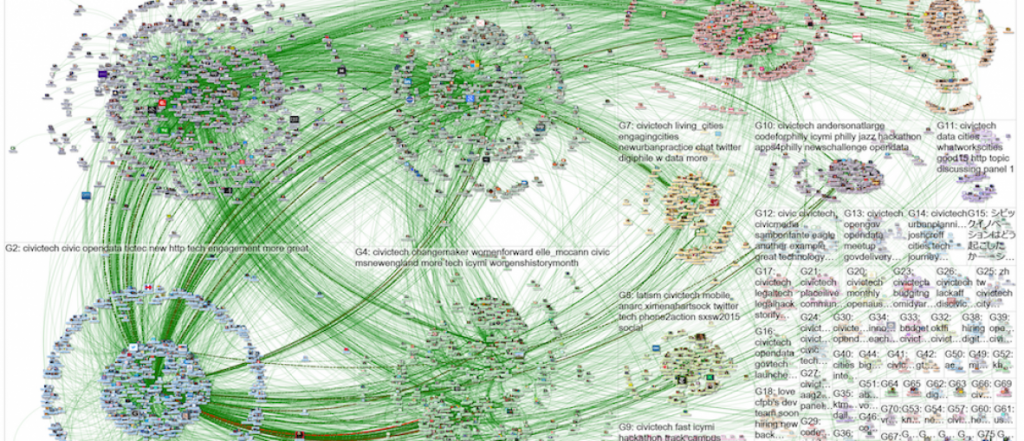WHITE HOUSE HITS RESET BUTTON ON WETHEPEOPLE
- DAVE KARPF
- July 28, 2015
- 4:43 pm
In light of today’s announcement, I think it’s fair to say that WeThePeople is no longer a virtual ghost town.
Last year I argued that the White House’s epetition site WeThePeople had become a virtual ghost town, but today the administration’s Chief Digital Officer, Jason Goldman announced some important changes that promise to breathe new life into what had become a stagnant site.
The White House has cleared out the backlog of 20 truant petitions that had exceeded the 100,000 signature threshold but never received an official response, including several originally submitted in 2011 and 2012, along with the two-year-old petition to pardon Edward Snowden. It also has announced a new policy that all petitions that clear the threshold will receive a response within 60 days “wherever possible.” It has created a new team of people responsible for answering citizen petitions. It has posted more open code to Drupal.org and GitHub as an extension of its Write API, inviting third-party websites to integrate their petition-gathering with the White House site. And Change.org has announced that it will be the first major site to take advantage of the Write API, and will begin partnering with WeThePeople on petitions aimed at the administration.
The new 60-day policy is a welcome correction. It restores the promise of the site and makes a meaningful commitment that, if citizens collectively come together and petition their government, the government will listen and offer a timely response. The timeliness of response is crucial, specifically because the administration isn’t promising to agree with the petitioners.
A petition is just a single political tactic. If you want to change government policy, a petition alone usually won’t be enough. When the government negatively responds to your petition, that creates a focusing event. It’s an opportunity for additional media scrutiny and political organizing.
Take a look at how the Huffington Post has covered the “Pardon Edward Snowden” petition. Snowden’s supporters rallied over 100,000 people to sign that WeThePeople petition in June 2013. Then 25 months passed. During that time (as John Oliver pointed out in April), public attention has mostly drifted away from Snowden’s revelations. The White House response will put this issue back on the public agenda, at least for a little while. It’s like oxygen to the activist fire—even when the government disagrees, the act of public disagreement is far preferable to suffocating silence.
That being said, the 60-day response policy is far from the most important part of Goldman’s announcement. The Change.org partnership is much more significant in the long term. The partnership is crucial because it lessens the tension between being the venue for and the target of political petitions. It means that WeThePeople is no longer competing with Change.org, MoveOn.org, Credo Mobilize, Care2, or Democracy.io. These organizations are optimized to promote long-term, large-scale citizen engagement. The White House petition site isn’t (and probably shouldn’t be). Rather than choosing between creating a WeThePeople petition or creating a Change.org petition, motivated citizens can reap advantages from both.
It also means that we can rightly start to measure WeThePeople by different metrics than the other sites. And that’s important, because it’s when you evaluate WeThePeople according to the same metrics as MoveOn petitions or Change.org that the “ghost town” imagery emerges.
Consider: 19.5 million individuals have signed a WeThePeople petition. There have been a total of 27.7 million signatures. Depending on how you measure it, that’s either a very large number or a surprisingly small number. If the White House petition site were an advocacy group, it would be almost 2.5 times larger than MoveOn.org. But the ratio of users to signatures means that, on average, people have signed only 1.42 petitions apiece. Or, put another way, most people sign one WeThePeople petition and never come back. Only 2 or 3 petitions are started per day on WeThePeople. Change.org receives hundreds per day. Those are “ghost town” metrics: People visit once, see little, and never return.
By comparison, SumOfUs.org has developed a measure called MeRA (members returning for action) to determine its effectiveness. If people take one action with SumOfUs, then never come back again, SumOfUs calls this a weakness, not a strength. Sites like MoveOn.org and Change.org devote tremendous resources towards optimizing their sites to promote active petition-creation, petition-sharing, and repeat petition-signing. Their MeRA scores are much higher than WeThePeople’s.
If you are a social movement organization that wants to build power for social reforms, repeat member engagement is very important to you. It’s a key building block in developing the type of deep engagement that can eventually drive social change. Up until now, the White House site was effectively competing with these movement organizations for our civic attention. Integrating with Change.org means this competitive relationship becomes a collaborative relationship. If groups like MoveOn and Care2 follow suit, it will represent an important evolution within the digital petition world.
The Change.org partnership also improves the likely longevity of the site. When the next President takes office in January 2017, he or she will have to decide whether open petitions and digital government is going to remain a priority. Jimmy Carter installed solar panels during his time in office. Ronald Reagan tore them off. I doubt a President Trump would place as high a priority on digital civic engagement as President Obama has. The more that WeThePeople integration is baked into the functionality of other large petition sites, the harder it will be for the next President to shutter WeThePeople’s doors.
Moving forward, I’ll be watching for two things to determine just how successful this revitalized WeThePeople turns out to be:
- Does the White House keep its 60-day commitment when a wave of big, controversial petitions arrives? Jason Goldman has made a promise here. I’m hopeful that he’ll stand behind it. It will be a few months before we know for sure.
- Do other third-party platforms like MoveOn Petitions, Care2, and Credo Mobilize follow Change.org’s lead and integrate with WeThePeople? It’s no surprise that Change.org took the lead here—open government advocate Jake Brewer recently left Change.org for a job at the White House, and Change.org is the 800 pound gorilla of petition sites. If the other civil society petition sites all follow Change.org’s lead, that will clearly establish WeThePeople’s niche.
In light of today’s announcement, I think it’s fair to say that WeThePeople is no longer a virtual ghost town. It’s becoming more like a virtual resort destination—lots of visitors, who get a lot out of their experience, but very few locals who actually call the place home.
And that’s probably how it should be.



